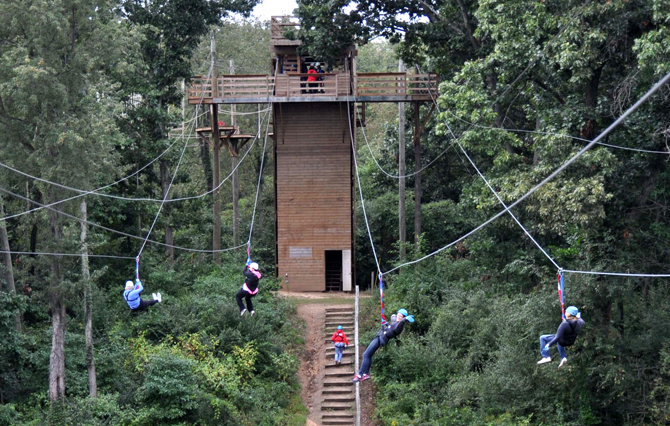Editor's note: This interview is part of a series on leadership development.
The global business environment is unpredictable, interdependent and complex -- even unstable. How does this context affect leadership?
To answer this question, researchers at Duke Corporate Education interviewed 38 chief executive officers in 12 industries across the globe about how the increasingly volatile environment affects their work. That research is the basis of the 2013 study, “Leading in Context.”
 “What we noticed over the course of the last few years is that the context had changed for organizations, and therefore really radically for leaders,” said Pete Gerend, the regional managing director for North America at Duke Corporate Education.
“What we noticed over the course of the last few years is that the context had changed for organizations, and therefore really radically for leaders,” said Pete Gerend, the regional managing director for North America at Duke Corporate Education.
The study’s conclusion: Leading today isn’t just about technical prowess. Leaders must develop a mindset that allows them to perceive what’s going on in their environment, to understand the system as a whole and to build the relationships that will allow them to execute technical solutions.
Gerend, who also is a visiting professor in Duke’s psychology and neuroscience department, spoke to Faith & Leadership about how the findings of the study have informed leadership development training at Duke Corporate Education -- and his own work as a leader. The following is an edited transcript.
Q: Coping with change and unpredictability is the major theme of this report. What does that mean for leaders?
 Change has traditionally been very focused on leaders driving change in their businesses. The thing that’s new now is that it’s not about changing the organization -- though that still happens. But what’s new for leaders is that their context is changing.
Change has traditionally been very focused on leaders driving change in their businesses. The thing that’s new now is that it’s not about changing the organization -- though that still happens. But what’s new for leaders is that their context is changing.
It’s something that we grapple with with our clients, because people are very accustomed to saying, “Change is about us making change.” But the real change is the change that’s happening all around them.
Q: How can you lead well when you can’t feel confident about predicting the future?
There were a few things that we realized that people do in order to get comfortable and to be effective in an environment that’s rapidly changing.
So one is that they focus a lot on perceiving. How do you see what’s happening without judging? It’s too easy for leaders and organizations to come into new situations with their old mindsets and their old lenses and their old ways of seeing how things operate. They misinterpret signals or they don’t pay attention to signals.
Effective leaders in new environments start by paying attention to what’s going on. What are the variables in the system? What are the things that are happening in the culture? How do you see without judging, essentially, or how do you look without thinking?
For leaders, especially in Western companies -- people who are driven to act -- that’s a really, really hard thing to do. But it’s something that we believe is required for leaders to be effective.
Q: Another point in this report is that leaders need to look at systems and to lead through influence. How does that differ from the old leadership image of the brilliant, dynamic individual?
It’s not necessarily about command and control and about having the authority, really. Authority isn’t derived from necessarily positions of formal power in organizations; authority is often now based on proximity to knowledge and insight about what’s happening in a particular environment.
And so leaders need to make sense of what’s happening by developing new, credible sources of knowledge.
I was interviewing a CEO from a mining and minerals company, and he was telling a story about doing some work in South America. This was 15 years ago or so. They had this huge technical challenge that they were trying to solve -- how do we get at this site, and how do we extract material? They had pretty much carte blanche from the government. And so the technical challenge was huge, but because they had control, they could just make it happen.
And he talked about a recent example in Turkey, where they had a technical challenge that was maybe an order of magnitude greater than the technical challenge in South America. But more importantly, they had many new stakeholders they had to account for.
The government in Turkey was very interested in making sure that they were not just extracting and leaving but that they were doing something sustainable. It was at the border of three different tribal areas, and so each of the tribal folks had an interest and an ability to influence the outcome.
The complexity of the relationships exacerbated the technical challenge. And it took them a while to figure out that the leader needed in that situation wasn’t the most brilliant technical leader, which is what they relied on in the past. They needed someone who was technically competent but also who was politically savvy and who was open and creative and willing to draw on different sources of knowledge and information.
Q: How is technical knowledge different from systemic and tacit knowledge?
Technical knowledge is something that we’re all accustomed to being trained in. We find that many organizations around the world have emphasized proficiency and technical knowledge. Leaders rise through the ranks often based on their technical competence.
Do they know how to solve the problem? Do they know how to do the work? And that’s great, and it’s necessary.
The challenge now is that there’s more interdependency. There are more linkages between political groups and organizations, and as a result of that, it’s important for leaders to see the entire system in which they operate.
Leaders need to see the system, and then they need to be able to identify the points of leverage in the system. It’s not OK anymore just to try to solve the problem directly.
That often means that you have to extend the reach in terms of the number of stakeholders you involve, the number of experts, the different perspectives that you gather, and you have to be willing to make trade-offs, short-term and long-term trade-offs. How do we optimize for the whole as opposed to any one of the parts?
Tacit knowledge is really about the things that we do without recognizing that we do them. It’s about interpersonal interactions; it’s about cultural awareness. What are those little, weak signals that can make a big difference and influence the system?
Q: How does this new context affect the work that you do? How do you teach this?
We help leaders know what they need to know, help them have the skills to be able to do what they need to do, and help them develop the mindset and beliefs to be able to see the world in the right way in order to be effective.
If you think about the balance of those three things -- knowing, doing and believing -- in the past, leadership development has been very tilted toward knowing and doing.
Now, there’s a real emphasis in this context on believing. Believing that there are things that you don’t know that you need to learn, believing that you don’t have the authority.
And so some of what we do is put people in situations. You get people out of the classroom; you put them in a situation where they have to grapple with this kind of change, where they have to understand at a personal level how they deal with new situations.
One of the changes for us is that this is something that is very, very personal. You will deal with new environments in ways that are very different from how I deal with new environments. Helping people understand that, then giving them the skills and knowledge to build on their own personal approach, is critically important.
Q: To what degree do you bring out people’s own gifts in leadership?
I’ll tell you another story. We are testing a new approach that is a very immersive experience. We were piloting that experience in San Diego this summer, and I got to be a participant. We created a fictitious environment and put people in this environment for multiple days. They have a challenge they have to solve, and it is very realistic and very unsettling.
Within the first several hours of being in this immersive experience and trying to navigate through and make sense of what was happening, I had gathered two people with me so that we formed a team.
I had a coach who was working with me, observing me throughout the process, and she asked me, “In uncertain situations, do you tend to form teams?” And that’s something I hadn’t thought about before this.
When I reflected on it, I went back and found three or four other examples where I was very uncomfortable and things were very uncertain, and that’s exactly what I did. I gathered some people together to help me navigate.
So it’s about understanding how you work, how you deal with uncertainty, and then helping you either build on what you do well or change the things that could be potential vulnerabilities.
Ultimately, what we’re trying to develop is a personal process for consistently dealing with and navigating through uncertainty. We’ve seen in organization after organization, time and time again, that that’s something that once you have it, you don’t lose it; you can practice it. And so it will help leaders be more effective.
This is about how do you develop a personal process for dealing with uncertainty.
Q: So what were you doing, if you don’t mind my asking?
We created a country called Baruzia. You’re representing a company, and so you have to understand what’s happening in terms of the dynamics, which are unique, and make relationships with people who are influential. Then you develop a case for being a valued partner to the government.
It’s amazing. It’s a very immersive, full experience. And all the actors are in character the whole time. They are going about their daily routines; they are the people they’re supposed to be.
So the ministers are ministering, and the religious leaders are dealing with the people, and the shopkeepers are tending their shops and selling their goods, and the farmers are farming.
And part of what I realized is that not only as a leader is it important to see the system, but the other thing that is just as important is that you have to know how and where to influence the system.
So where do you engage? And so that insight -- see the system and influence the system, those two very different skill sets -- are things that I’ve applied in my own work.
I lead an organization of about 70 people in North America, and so I think a lot about the work that we’re doing. It’s a system that involves the 70 people, plus a few hundred external partners, plus our clients.
So how do I see the system? And where are the opportunities that I have, given my standing, to actually make change? It’s not always the thing that you would think it would be.
Sometimes it’s influencing the person who can have a big impact, as opposed to pushing though my own ideas about what the right thing to do is.
It also became very clear to me in Baruzia that this is about relationships. I have to ask myself the question, “Do I have the right level of relationship with the right people?”
Q: Why are beliefs or mindsets important for leaders?
This notion that we talk about -- mindsets -- is how important it is to start with openness. Openness means seeing without judging, but it also means humility.
If you’re humble, then you’re not only open but you’re willing to engage and bring others along and to be influenced in ways that in the long run can have positive implications on your ability to impact and influence.
We see more and more in organizations that humility is an important starting point for leaders. And I think that’s true not just in business; I think it’s true in our communities, too.










